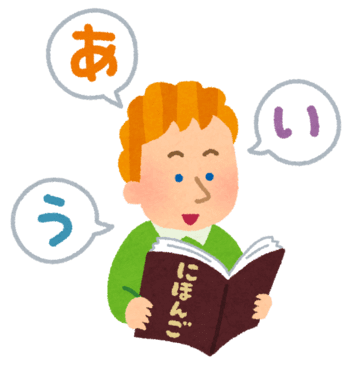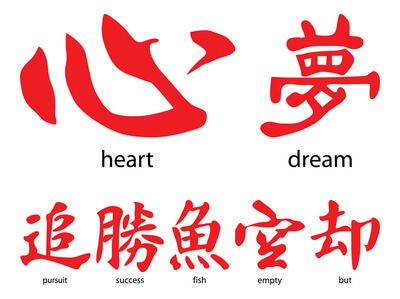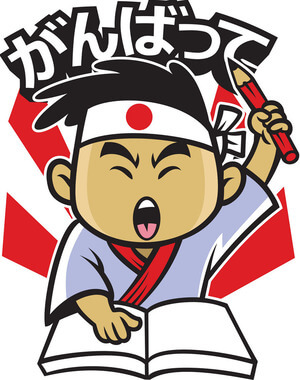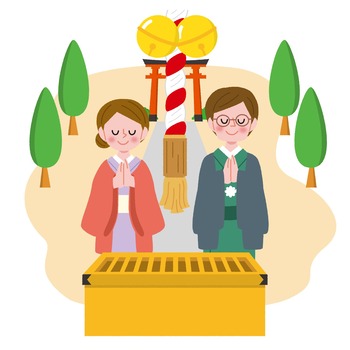Learning Japanese can be a challenge for English speakers due to several factors, including the writing system, pronunciation, grammar, and vocabulary.
However, there are many benefits English speakers will notice, too!
The post-beginner to pre-intermediate stages of Japanese language learning is hands down the most difficult part of the process.
Despite looking intimidating, learning the most used Japanese script, or alphabet; hiragana, actually takes a lot less time than you might think, even if you only know English.
In fact, as a native English speaker who only knew English, I was able to come to grips with it in under a few hours.
It’s when you hit the post beginner stage when things start to become challenging, mainly because of grammar.
However, once you develop a basic understanding of how the Japanese language works, the intermediate stages and beyond become a lot easier.
So with that said, let’s take a look at precisely how hard learning Japanese is for English speakers!
Table of Contents
Why the Japanese Alphabet is Hard For English Speakers
One of the most significant challenges when learning Japanese is the writing system.
Unlike the English writing system which uses a single alphabet with 26 letters, the Japanese writing system consists of three different writing systems, Hiragana, Katakana, and Kanji.
The Hardest Part of Japanese For English Speakers – Kanji
Kanji are Chinese characters that have been adopted into the Japanese language.
There are over 2,000 commonly used kanji, and they are used for nouns, verbs, and adjectives.
Each kanji represents a concept or idea, rather than a sound.
For example, the kanji for “tree” represents the idea of a tree, rather than the sound of the word “tree.”
Chinese speakers will find that they have a massive advantage with kanji..
While Chinese speakers may not be able to read the characters in Japanese, they will be able to deduce the meaning of words without much difficulty at all.
For English speakers on the other hand, because of how different they are to English, and the sheer quantity of them, kanji is hands down the most difficult part of the Japanese writing system to learn.
Some people may question if they really need to learn kanji, and while that does depend on your goals with the language, I highly recommend at least getting the basics down.
Hiragana
Hiragana is a phonetic script that is used for Japanese words that do not have a corresponding kanji, as well as for verb conjugation and grammatical particles.
There are 46 basic hiragana characters, and each one represents a syllable. For example, the character あ represents the sound “a.”
The Easiest Part of Japanese For English Speakers- Katakana
Katakana is another phonetic script that is used for loanwords, foreign names, and onomatopoeia.
It has the same basic characters as hiragana, but they are written in a different style. Katakana is often used in advertisements and signage to make words stand out.
Katakana & The Advantage as an English Speaker
While Kanji is where English speakers may struggle the most, katakana is where English speakers will notice they have an advantage (even over Chinese speakers)!
This is because a hefty number of katakana words are words that have been borrowed from the English language.
The reverse is also true; there are many words that have been borrowed from the Japanese language into English.
For instance words such as “karaoke, karate, sushi, ramen, anime, and manga” are all Japanese words.
Katakana is essentially the opposite of this. Let’s take a look at a few.
- サッカー (sakka) means soccer/football.
- ケーキ (ke-ki) means Cake.
- レストラン (resutoran) means restaurant.
- マクドナルド (makudonarudo) means Mcdonalds.
- コンピューター (conpu-ta-) means computer.
It may take you a moment to work out what word is written, but you will notice a huge advantage understanding the meaning of these words as an English speaker.
There are also katakana words that have been taken from other countries and languages too.
For instance:
- パンツ (pantsu) – means “pants”, which is the word for underwear in British English.
- アルバイト (arubaito) – means “part-time job”, which is derived from the German word.
- ノルマ (noruma) – means “quota” which is derived from the Russian word.
Differences Between Japanese and English Writing
Phonetics vs. Logograms
One of the most significant differences between the Japanese and English writing systems is the use of phonetic scripts versus logograms.
English uses the Latin alphabet, which is a phonetic script. Each letter represents a sound, and words are formed by combining these sounds. Japanese, on the other hand, uses kanji, which are logograms.
To reiterate what I mentioned earlier, each kanji represents an idea or concept, rather than a sound. This means that Japanese words cannot be sounded out in the same way as English words.
Syllables vs. Letters
Another difference between Japanese and English is the way that words are broken down into units.
English words are made up of letters, which are combined to form syllables.
In Japanese, words are made up of syllables, which are represented by hiragana and katakana characters.
Spacing
English words are separated by spaces, which makes it easy to distinguish where one word ends and another begins.
Japanese, however, does not use spaces between words. Instead, kanji are used to separate words in written text.
Learning the Japanese Alphabets as an English Speaker
Learning the Japanese writing system can be a daunting task, but it absolutely can be done as an English speaker. It doesn’t take long to learn the basics, either!
Here are some tips for learning the three scripts:
Start with Hiragana
Hiragana is the most basic of the three scripts, and it is used for almost everything in Japanese. Start by learning the 46 basic characters and then move on to kanji.
Oh, and avoid romaji completely!
Learn Kanji in Context
Kanji can be overwhelming, but it is important to learn them in context. Start by learning the kanji for the words you use most frequently, and then build from there.
Use mnemonics to assist with remembering the kanji. I strongly recommend taking a look at Hesig’s method.
Use Flashcards
Flashcards are a great tool for learning kanji. One that I have been using consistently for years is Anki I cannot recommend it enough.
Anki is a free digital flashcard application that incorporates SRS.
It has been one of my most powerful tools to help me remember and learn vocabulary and grammar.
Take it Slow
Learning the Japanese writing system takes time, so be patient with yourself. Don’t try to learn everything at once; instead, focus on one script at a time.
Learning all three writing systems can seem overwhelming, especially since kanji has thousands of characters.
However, the three alphabets do flow together very well.
Getting the hang of how the Japanese writing system works can take some time as an English speaker.
Yet, you’ll soon realise how hiragana, katakana and kanji work together.
Master hiragana first, it won’t take much time at all.
Japanese Pronunciation For English Speakers
Japanese pronunciation can be challenging for English speakers because of how different it can be from English.
Particularly, Japanese has five vowel sounds, which are pronounced differently than in English.
Take a listen how you pronounce the vowels in Japanese!
A/あ:
E/え:
U/う:
I/い:
O/お:
Additionally, there are many Japanese sounds that don’t exist in English, such as the “tsu” sound.
I strongly recommend taking a look at Dogen’s videos on YouTube.
He goes over in depth the differences between English and Japanese pronunciation/pitch accent.
He also covers the most common mistakes English speakers make when learning Japanese that make them sound unnatural.
Intonation Can be a Challenge For English Natives
Japanese has a unique pitch accent system that can pose a challenge to English speakers.
The pitch accent system involves placing emphasis on specific syllables in a word to change its meaning.
For example, the word “hashi” can mean “bridge” or “chopsticks,” depending on the pitch of the syllables.
The first syllable has a high pitch, while the second syllable has a low pitch when it means “bridge”.
In contrast, the second syllable has a high pitch when it means “chopsticks.”
Japanese pronunciation is also characterised by the use of consonant clusters and the elongation of vowels.
Again, take a look at Dogen on YouTube who covers this topic in immense detail.
How Hard is Japanese Grammar For English Speakers?
One of the most difficult aspects of Japanese learning for English speakers is without a doubt, the grammar.
Japanese vs English Sentence Structure
Let’s begin with sentence structure. In English, we typically use subject-verb-object word order, such as “I eat sushi.”
In Japanese, however, the word order is typically subject-object-verb, such as “I sushi eat.”
This can take some getting used to for English speakers, but it becomes more natural with practice.
Japanese & English Verb Tenses
In English, we have a wide variety of verb tenses to convey different meanings, such as past, present, and future.
In Japanese, however, there are only two verb tenses: present/future and past.
Instead of relying on verb tenses to convey time, Japanese uses context and particles (small words that indicate the function of a word in a sentence) to convey the time frame of an action.
Particles
Speaking of particles, they are a key part of Japanese grammar and can take some time to master.
Particles are small words that attach to other words to indicate their grammatical function in a sentence.
For example, the particle “は” (wa) is used to indicate the subject of a sentence, while the particle “を” (wo) is used to indicate the object.
There are many different particles used in Japanese, each with their own unique function.
Japanese Pronouns
In English, we use pronouns such as “I,” “you,” and “they” to refer to people and things.
In Japanese, however, pronouns are often omitted and instead the person or thing being referred to is indicated by the context of the sentence.
For example, instead of saying “I am going to the store”, in Japanese you might say ” 買い物に行きます (kaimono ni ikimasu), meaning “I go to the store”, with the context indicating that the speaker is the one going to the store.
This may take some getting used to for English speakers, but after some practice, it actually feels very logical and natural.
This does mean though that most of the time when you wish to call out to, or address someone in Japanese, you will need to use their name!
The Japanese language does have words for “you”, however they are extremely nuanced words. You should definitely be careful with using words such as “anata”, which is the most common term that dictionaries will show you.
This is because this is a word that is often used when speaking to your significant other.
Verb Endings
In Japanese, verbs often end in a variety of endings depending on the function of the verb in the sentence.
For example, the endingます (-masu) is used to indicate a polite form of a verb, such as 食べます (tabemasu) meaning “to eat”.
Verbs ending with ている (teiru) is used to indicate the “-ing” form of a verb, such as 食べている (tabeteiru), meaning “eating”.
Remembering how verbs conjugate can take some getting used to for English speakers, but with practice, it becomes easier to understand.
The Forms!
While there are only two tenses in Japanese, there are a lot of different forms.
The te-form is one of the first you will learn. Once you’ve got the general gist of how the forms work down, Japanese grammar becomes significantly easier to digest in my experience.
Here are some examples:
- The passive form.
- The conditional form which is used to express “if” statements in Japanese.
- The causative form which is used to indicate that someone is causing something to happen.
- The te-form is used to indicate a sequence of actions, to connect clauses, to make requests, and more.
- The potential form is used to indicate the ability to do something.
- The conditional perfect form is used to express hypothetical situations that could have happened in the past.
- Honorific forms of verbs.
How Hard is Japanese Vocabulary For English Speakers?
Japanese vocabulary can be challenging for English speakers because some words may not be easily rendered into English.
Japanese has many words that don’t have an English equivalent, such as もったいない (mottainai), which means something along the lines of “a sense of regret concerning waste.”
Another common one is よろしくお願いします (yoroshiku onegaishimasu).
I’ve written an extensive article on this phrase before, but the number of cultural nuances in this word is incredible.
IT has many intertwined meanings. Therefore, you can use this phrase to say anything along the lines of:
- nice to meet you.
- please do.
- best regards.
Understanding Japanese Words and Meanings
There are a lot of words in Japanese that, when put in the dictionary, will give the same English definition. I’ve mentioned this earlier using the Japanese word for “heart” as an example, but it goes beyond this, too.
Saying “why” in Japanese is another instance.
Unlike in English, there are multiple words for “why” in Japanese, each with their own nuances and uses.
Remembering and becoming familiar with them all can be a challenge for some.
Japanese plurals
In Japanese, plurals indicate that there is more than one of something.
However, unlike in English, Japanese plurals do not involve changing the form of the noun itself.
Instead, there are certain patterns that are used to indicate plurality.
Basic Japanese plurals
One common way to form Japanese plurals is by adding the suffix たち (tachi) to the end of a noun.
For example, 子供 (kodomo) means “child”, but by adding たち (tachi) to the end, you get 子供たち (kodomotachi), which means “children”.
Similarly, 学生 (gakusei) means “student”, but adding たち (tachi) results in 学生たち (gakuseitachi), meaning “students”.
Irregular Japanese plurals
Not all Japanese plurals follow the たち (tachi) pattern, however.
Some words have irregular plurals that you simply have to memorise.
For example, 人 (hito) means “person,” but the plural form is 人々 (hitobito), which also means “people.”
Other times, some don’t even require any modification at all.
For example, 本 (hon) means “book,” but the plural form is also 本 (hon), meaning “books.”
Counters in Japanese
Another way to indicate plurality in Japanese is by using counters.
Counters are words that are used with nouns to indicate quantity. For example, if you want to specify “one book” in Japanese, you would say 一冊の本 (issatsu no hon).
Here, the counter for books is 冊 (satsu), which is used after the number.
Similarly, if you want to say “three friends” in Japanese, you would say 三人の友達 (san nin no tomodachi). Here, 人 (nin) is the counter for people, and it is also used after the number.
Differences between Japanese and English plurals
As mentioned earlier, Japanese plurals do not change form based on singular or plural.
This is because there are no grammatical articles in Japanese like “a” or “the.” Instead, context and other particles are used to indicate whether a noun is singular or plural.
.For example, if you say “I have one book” in Japanese, you would say 私は本が一冊あります (watashi wa hon ga issatsu arimasu).
Here, the particle が (ga) indicates that “book” is the subject of the sentence, and the counter 一冊 (issatsu) indicates that there is only one book.
Japanese Honorifics Can Be Difficult!
One aspect of Japanese that can be particularly challenging for English speakers to grasp is the use of honorifics, which are titles or suffixes used to show respect and politeness when addressing or referring to others.
Understanding Japanese Honorifics
Japanese honorifics are a fundamental part of the language and are used to indicate the social status, relationship, and level of formality between the speaker and the listener.
There are two main types of honorifics: formal and informal.
As the names suggest, formal honorifics are typically used in more formal or professional situations, while informal honorifics are used in casual or familiar settings.
There are many different types of honorifics used in Japanese, including suffixes that are added to names, titles that are used before or after a person’s name, and expressions that are used to show respect or gratitude.
Some common honorifics include “san,” which is a general honorific used to address people in formal or business settings, “sama,” which is a more respectful and formal honorific used to address someone with higher status, and “chan,” which is a more informal and affectionate honorific used to address children, close friends, or pets.
You attach these honorifics to a person’s name. For instance customers in Japan are generally referred to as 客様 (kyaku sama), which can be understood as meaning “sir/madam customer”.
The use of honorifics in Japanese can be quite complex, and it is important to understand the appropriate context and level of formality for each situation.
For example, using the wrong honorific or using a formal honorific in an informal setting can be seen as disrespectful or inappropriate.
Honorifics and Japanese Culture
Honorifics are not just a linguistic feature of Japanese, but are deeply rooted in the country’s culture and social norms.
In daily life, honorifics are used to show respect and politeness to others, and are an important part of Japanese etiquette.
In business and work settings, honorifics are used to show respect for colleagues, superiors, and clients, and are considered essential for building professional relationships.
Honorifics also play an important role in Japanese media and entertainment.
For example, in anime and manga, honorifics are often used to convey character personalities and relationships, and can be an important part of understanding the story and dialogue.
Challenges in Learning Japanese Honorifics
Learning Japanese honorifics can be challenging for English speakers due to the complex system of different levels of politeness and formality applied in different situations, as well as the differences in honorifics across regions and generations.
Additionally, it can be difficult to learn the appropriate context for using honorifics, as the rules can vary depending on the speaker’s relationship with the listener and the level of formality required.
Japanese honorific words are often completely new words entirely.
This means that you wont be conjugating words you’ve already learned, but in regards to the vocabulary, it’s almost like having to learn a whole new language within a language.
So, Is Japanese Hard to Learn for English Speakers?
Learning the Japanese language gets easier the more you progress your ability. In my opinion, Japanese language learning at the beginner stage is when it’s the hardest.
As you become more proficient at the language and break into the intermediate levels, you will notice that a lot of Japanese grammar is just a repeat of “form conjugation + grammar point”.
With that said, as an English speaker, your biggest advantage will be with understanding katakana, and your biggest disadvantage will be with kanji and wrapping your head around the sentence structure which is often very different to English.






